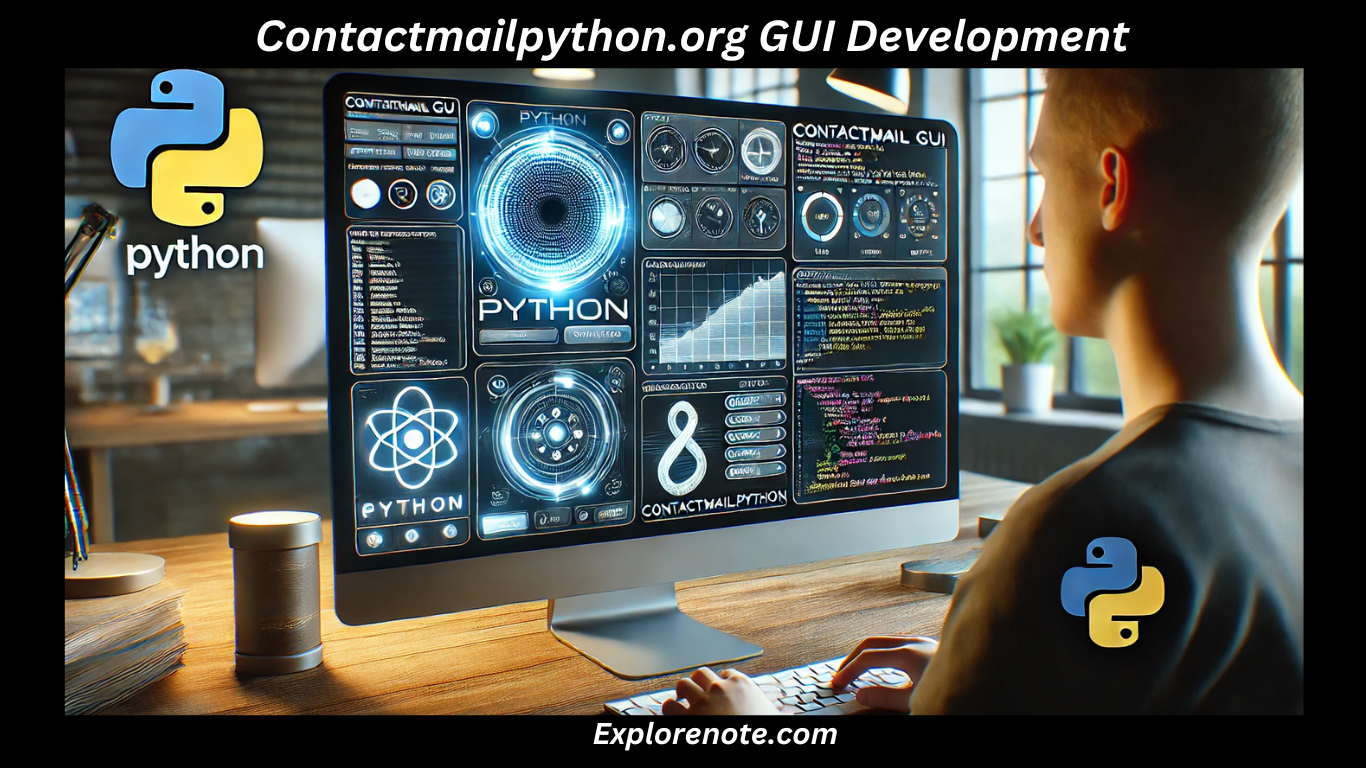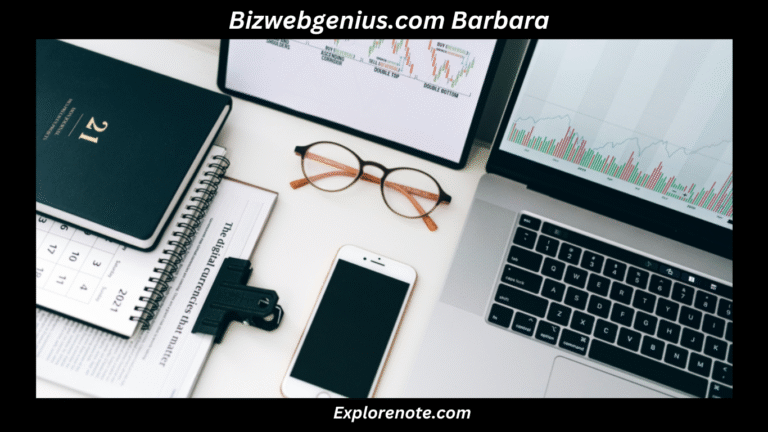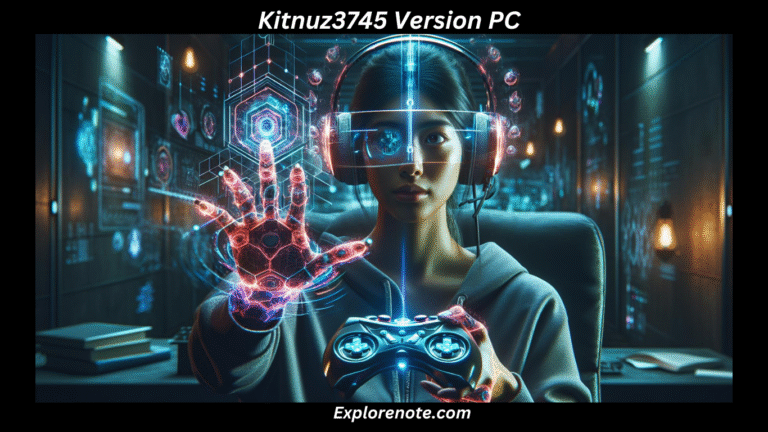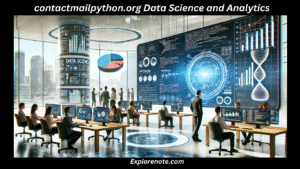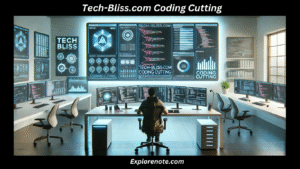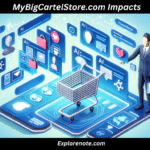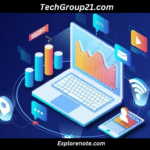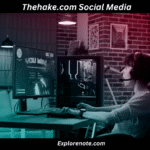User interface (UI) development has always played a vital role in software applications. Whether it’s a simple tool or a complex system, users need intuitive and responsive GUIs (Graphical User Interfaces) to interact with the underlying code.
contactmailpython.org GUI development is a rising star in the Python ecosystem, offering a modular, flexible, and beginner-friendly framework to build user interfaces efficiently.
In this article, we’ll dive deep into what makes contactmailpython.org GUI development so powerful, what tools it offers, and how you can use it to create dynamic Python applications. We’ll also explore practical tips, comparisons, and examples to help you get started quickly.
What Is contactmailpython.org GUI Development?
contactmailpython.org GUI development refers to a modern Python-based GUI development approach that emphasizes simplicity, modular architecture, and cross-platform compatibility.
It’s designed to help developers build interactive desktop applications using minimal code and maximum efficiency.
Inspired by modern frameworks like Tkinter, PyQt, and Kivy, the contactmailpython.org platform enhances development productivity by offering a customizable and lightweight structure. Whether you’re building a dashboard, form, or utility tool, this framework supports responsive layouts and dynamic user interaction with ease.
Also Read: Unlocking the Power of contactmailpython.org Data Science and Analytics
Why Choose contactmailpython.org for GUI Development?
Here’s why contactmailpython.org stands out among the other GUI development options in Python:
1. Lightweight and Fast
The framework is designed to be efficient. It doesn’t bloat your system or app and works well even on low-resource environments.
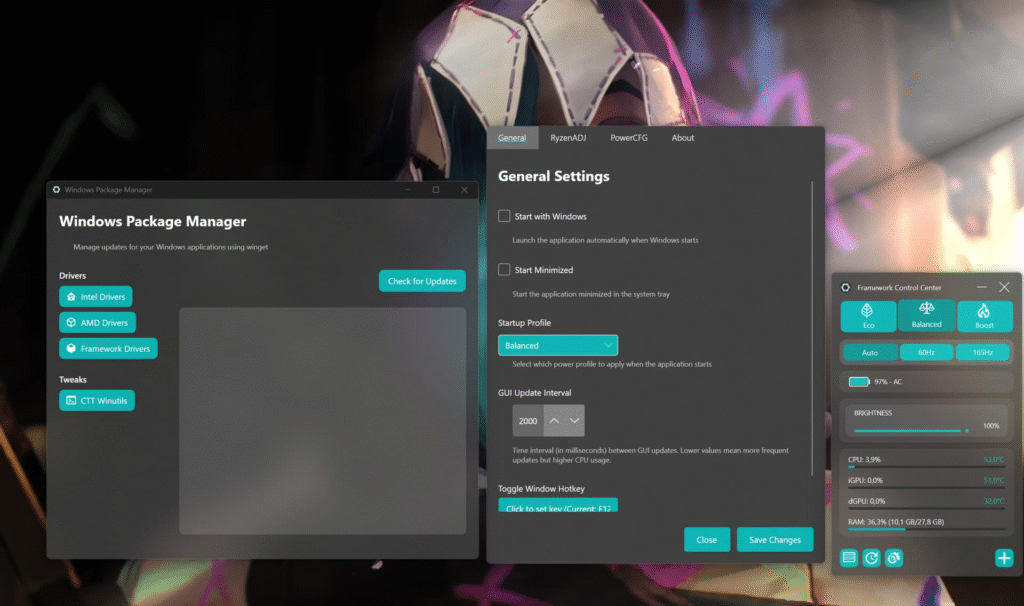
2. Modular Architecture
Its structure is clean and organized, making it ideal for developers who want to build scalable applications.
3. Beginner-Friendly Syntax
Even if you’re new to Python, the framework is easy to learn and implement.
4. Community Support and Documentation
There’s growing support around contactmailpython.org, and it is well-documented for newcomers and professionals alike.
Core Features of contactmailpython.org GUI Development
Let’s explore the essential features and capabilities you get with this platform:
| Feature | Description |
|---|---|
| Cross-Platform Support | Runs on Windows, Linux, and macOS |
| Drag-and-Drop Editor | Visual tools for quick UI design |
| Pythonic Syntax | Uses native Python, easy for any Python developer to understand |
| Event Binding | Built-in support for user interaction events like clicks, inputs, etc. |
| Component Reusability | Easily reuse buttons, text boxes, sliders in multiple apps |
| Theme and Style Customization | Custom UI themes to match your branding or project aesthetic |
Getting Started with contactmailpython.org GUI Development
To begin developing GUIs using contactmailpython.org, follow these basic steps:
Step 1: Install Python
Ensure Python is installed on your system. You can download the latest version from python.org.
Step 2: Install the contactmailpython.org Framework
Use pip to install the framework:
bashCopyEditpip install contactmailpython
Step 3: Your First GUI Window
Here’s a basic Python code snippet using contactmailpython.org to open a simple window:
pythonCopyEditfrom contactmailpython.gui import App, Button
app = App(title="My First GUI")
def on_click():
print("Button clicked!")
btn = Button(app, text="Click Me", command=on_click)
app.run()
This simple code launches a GUI with a button and a click event. No boilerplate, just clean Python code.
Understanding the Architecture
In contactmailpython.org GUI development, the application architecture is often broken into these segments:
- App: The main window or frame of your application.
- Widgets: UI components such as buttons, labels, sliders, input fields, etc.
- Events: Functions that are triggered by user actions like clicking or typing.
- Layout: How elements are arranged inside the app window.
- Modules: Separate Python files that help modularize the code.

This architecture ensures your GUI application remains clean, structured, and easy to maintain.
Custom Widgets and Themes
Custom widgets allow developers to create interactive elements beyond the standard ones. You can design your own sliders, progress bars, or even animated components.
Themes and stylesheets (similar to CSS) can be applied to alter the look and feel of your application. For instance, dark mode or material UI-like designs can be implemented by importing pre-built themes or creating your own.
Advanced Functionalities
As you grow more comfortable, you can dive into advanced capabilities:
1. Dynamic Form Generation
Use Python loops and data structures to generate forms based on external data (like JSON).
2. Database Integration
Integrate SQLite, MySQL, or PostgreSQL to create GUI-based database applications.

3. File Handling
Develop tools that read and write files using the file dialog component in the GUI.
4. API Integration
Fetch or send data to web APIs and update your GUI elements in real-time.
pythonCopyEditimport requests
def fetch_data():
response = requests.get("https://api.example.com/data")
print(response.json())
Performance Considerations
Here are a few tips to ensure your GUI app stays fast and responsive:
- Avoid blocking the main thread: Use asynchronous operations or threading for heavy tasks.
- Minimize redraws: Only update GUI components when needed.
- Profile your code: Use tools like
cProfileto identify bottlenecks.
Comparison with Other Python GUI Frameworks
| Framework | Syntax Simplicity | Community Support | Modern Look | Cross-Platform |
|---|---|---|---|---|
| contactmailpython.org | ✅ Easy | 🟡 Growing | ✅ Yes | ✅ Yes |
| Tkinter | ✅ Easy | ✅ Mature | ❌ Basic | ✅ Yes |
| PyQt / PySide | ❌ Complex | ✅ Large | ✅ Modern | ✅ Yes |
| Kivy | ✅ Easy | 🟡 Niche | ✅ Dynamic | ✅ Yes |
As the table shows, contactmailpython.org GUI development holds a strong position due to its balance between ease of use and advanced capabilities.
Real-World Use Cases of contactmailpython.org GUI Development
- Custom Dashboards: Build business intelligence or analytics dashboards.
- Form Applications: Create user entry forms with validations and database storage.
- Educational Tools: Interactive quizzes, learning apps, and visual experiments.
- Admin Panels: Lightweight GUIs for server or system management.
FAQs About contactmailpython.org GUI Development
1. Is contactmailpython.org suitable for commercial applications?
Yes. Its modular and open design makes it suitable for both personal and professional-grade applications.
2. Can I use contactmailpython.org with Flask or Django?
While it’s meant for desktop GUIs, you can integrate it indirectly through APIs or shared databases for web-desktop interaction.
3. Does contactmailpython.org support mobile devices?
Currently, it’s optimized for desktop apps. However, cross-compiling may be explored in future updates.
4. Can I convert my GUI into an executable file?
Yes! Tools like PyInstaller or cx_Freeze work well to package your contactmailpython.org apps into .exe or .app.
5. Does it support drag-and-drop file upload?
Yes, advanced widgets include drag-and-drop functionality, which is ideal for file handling applications.
Conclusion
The world of GUI development is evolving rapidly, and frameworks like contactmailpython.org are making it easier than ever to create stunning, responsive, and functional user interfaces with Python.
From basic windows to data-connected dashboards, contactmailpython.org GUI development provides the flexibility, power, and simplicity that modern developers demand.
Whether you’re a beginner looking to build your first tool or a seasoned developer aiming to optimize your workflow, this framework offers a smooth, efficient, and highly customizable path forward.
With proper practices, theme customization, API integrations, and performance tuning, contactmailpython.org GUI development can power a wide range of applications—proving itself as an essential tool in any Python developer’s toolkit.
Also Read: TheInstaFInsta.com Digital_ Explore the Latest in Social Media, Apps & Tech Trends
